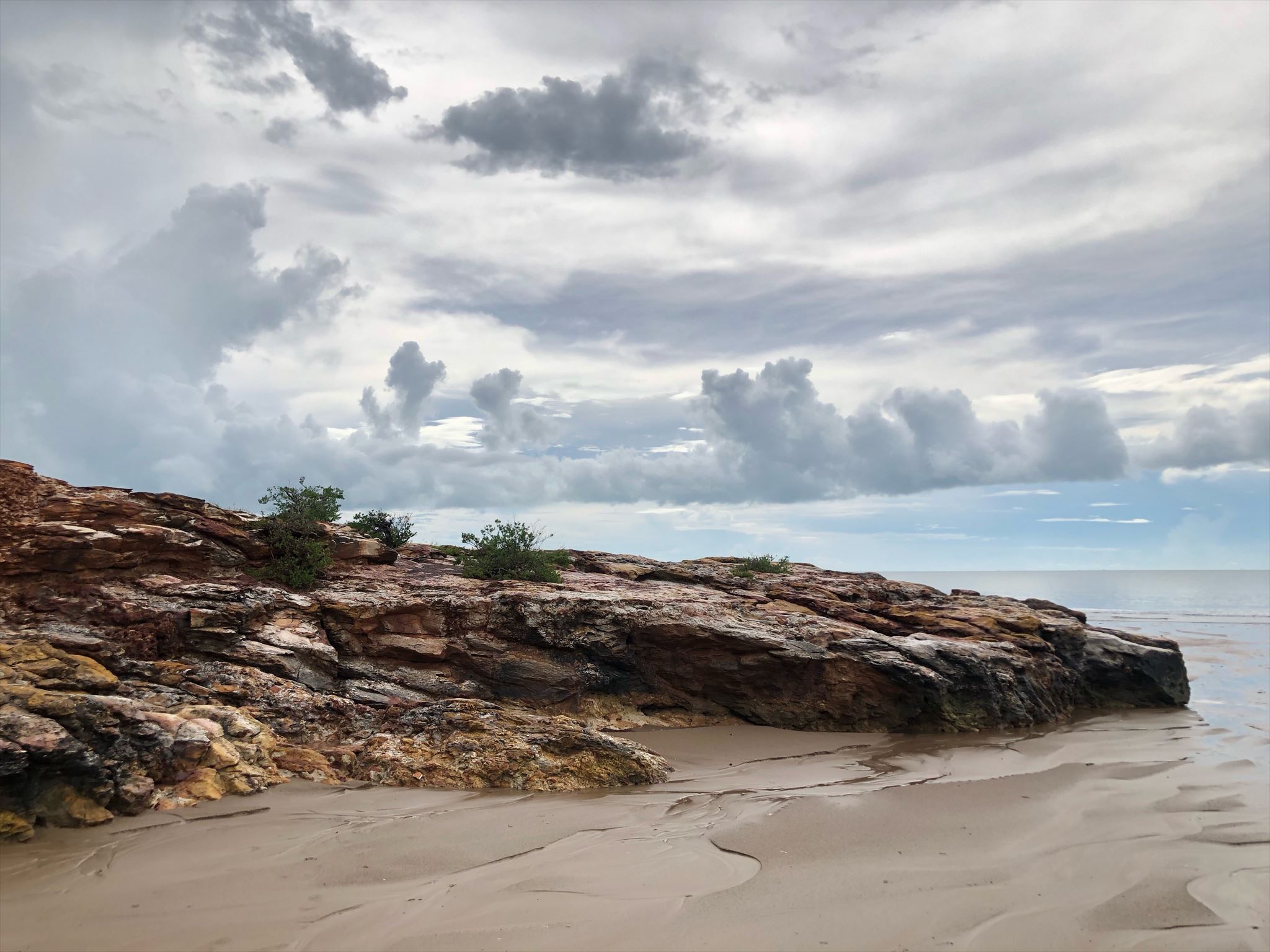Dripstone

Driving around Darwin and exploring I kept seeing signs that said "Dripstone" - the name of streets, a school, and some cliffs - so I went exploring. I discovered that Dripstone Cliffs and Dripstone Caves are made from eroded siltstone and fossil deposits that have evolved to form magnificently instagrammable formations and this led me down a rabbit hole to learn about siltstone and why it is so pretty. To me the cliffs look like stone that has had the paint from an artist's pallet dripped onto it.
What is Siltstone?
Siltstone is a sedimentary rock composed mainly of silt-sized particles. It forms where water, wind, or ice deposit silt, and the silt is then compacted and cemented into a rock.
Silt accumulates in sedimentary basins throughout the world. It represents a level of current, wave, or wind energy between where sand and mud accumulate. These include fluvial, aeolian, tidal, coastal, lacustrine, deltaic, glacial, paludal, and shelf environments. Sedimentary structures such as layering, cross-bedding, ripple marks, erosional contacts, and fossils provide evidence of these environments.
What Colour is Siltstone?
Siltstone occurs in a wide range of colours. It is usually grey, brown, or reddish-brown. White, yellow, green, red, purple, orange, black, and other colours occur. The colour is caused by the composition of the grains, the composition of the cement that binds them together, and stains produced by contact with subsurface waters.
Color is one of the first noticed and most obvious characteristics of a rock, but it is also one of the most difficult to interpret. With the exception of gray and black, which mostly results from partially decayed organic matter, most rock colors are the result of iron staining. Ferric iron (Fe+3) produces red, purple, and yellow colors (from minerals like hematite and limonite). Ferrous iron (Fe+2) produces greenish colors.
Some broad interpretations may be made from a rock's color. Red colors mean well oxygenated environments, such as river channels, some flood plains, and very shallow marine. Green colors mean an environment low in, or lacking, oxygen, often associated with marine environments. Dark gray to black colors mean anoxic conditions, which may mean deep water, but could also be a swamp environment. The conclusion is, environmental interpretations can only be made in relation to the other evidence present with the rock.

http://csmgeo.csm.jmu.edu/geollab/fichter/sedrx/color.html
Field Identification
Siltstone can be difficult to identify in the field without close examination. Weathered surfaces often appear to show sedimentary structures where none are present. Different layers weather at different rates. Siltstone is often interbedded with other lithologies.
Siltstone Uses and Economics
Siltstone has very few uses. It is rarely the target of mining for use as a construction material or manufacturing feedstock. The intergranular pore spaces in siltstone are too small for it to serve as a good aquifer. It is rarely porous enough or extensive enough to serve as an oil or gas reservoir. Its main use is as a low-quality fill when better materials are not locally available - but I am certainly glad this area has been protected against economic use of these beautiful cliffs.
https://geology.com/rocks/siltstone.shtml
This area also has a rich history from WWII and the defence of Darwin. The three concrete observation posts built into the top of Dripstone Cliffs in Casuarina Coastal Reserve Darwin, were part of a number of observation posts constructed around Darwin from 1939. The posts formed part of a coastal defence strategy developed to help defend Darwin, in anticipation of a sea and land based invasion by the Japanese during WWII. The observation posts on Dripstone Cliffs are located in an easily accessible and highly visible position.
source: https://northernterritory.com/darwin-and-surrounds/see-and-do/wwii-observation-posts-dripstone-cliffs
To log the cache:
1. You need to go to GZ and describe the main colour of the rocks where GZ is pointing. From this you will be able to speculate what mineral contributed to the colour and how much oxygen was present when the sedimentary rock formed.
2. Near here you will find a vandal named PHIL inscribed his name. Given that he was able to inscribe his name, what does this tell you about the hardness of the rock, and the size of the grains?
3. Please post a picture with your log of the beach and area but not specifically spoilers of GZ.
*Please be cautious navigating the area, the rocks can be slippery. Please also note that this is a protected site and do not be like Phil and vandalize these beautiful rocks by inscribing your name or taking samples.*
I hope you enjoy this earth cache as much as I did when I visited.